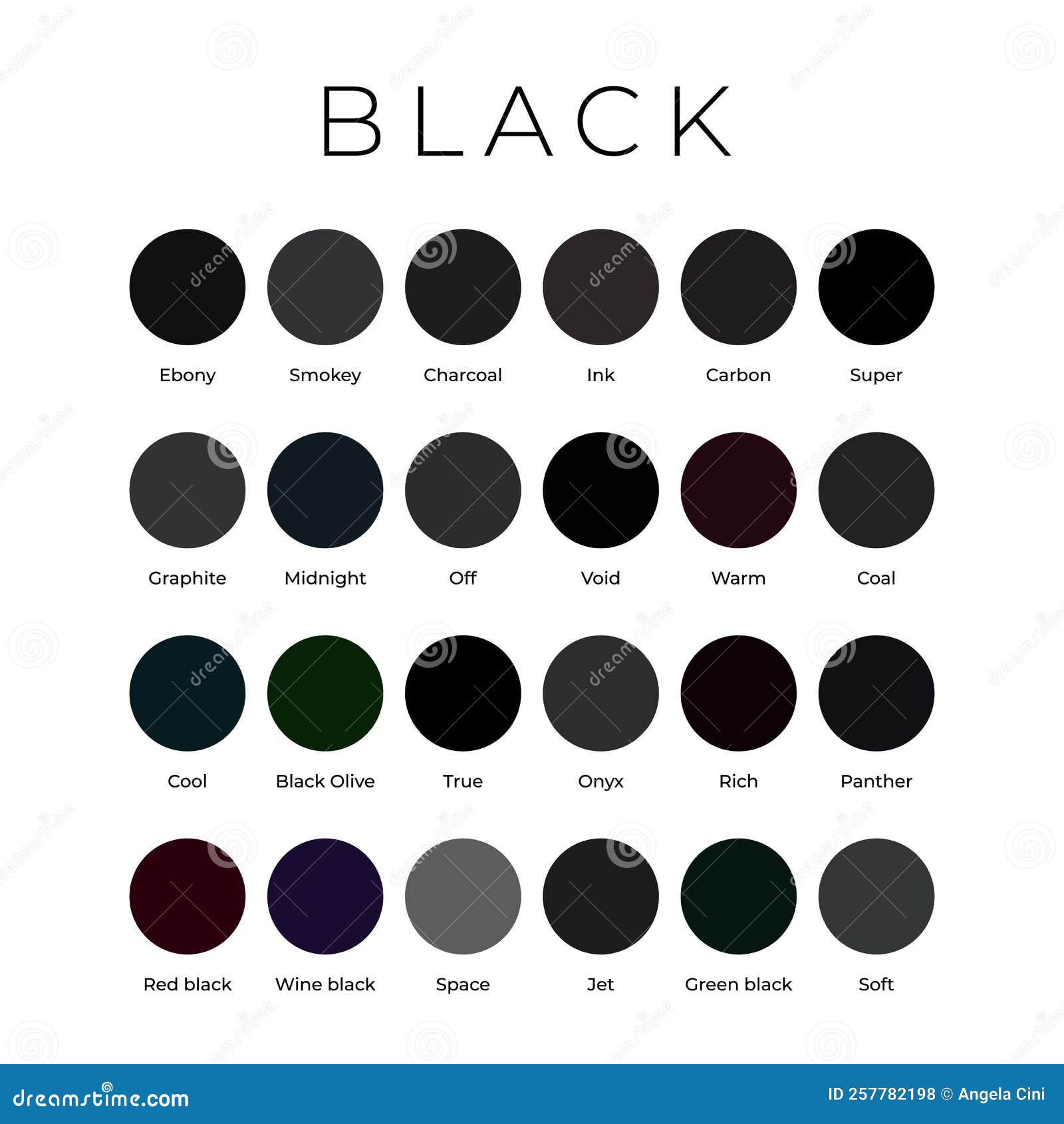Spotting something new on your furry friend's skin can be a moment that stops you in your tracks, can't it? Especially if it's something dark, like a black spot or a little growth. Just like the color black itself, which is often seen as quite mysterious or even a bit intimidating, a black skin tag on your beloved dog can definitely make you wonder what's going on. You might feel a little worried, perhaps even a bit of fear, wondering if it's something serious or just a strange little bump.
It's a really common thing for dog owners to come across these little markings. Sometimes they appear almost out of nowhere, looking like a tiny, dark speck, or perhaps a more noticeable raised area. The very darkness of them, like the deep shade of night when there's no light at all, can make them stand out quite a lot, especially on lighter fur. This visual contrast, you know, it can make them seem more dramatic than they actually are, in a way.
This article is here to help you sort through those thoughts and give you some peace of mind. We'll talk about what these dark spots might be, why they show up, and what steps you can take to make sure your dog is doing well. So, let's get into understanding these little black skin tags on dogs, and what they could mean for your canine companion, because, as a matter of fact, knowing more always helps you feel better.
- Does Carmex Burn
- January 20th Zodiac
- Skinniest Man
- The Skinniest People In The World
- Phil Mattingly Height
Table of Contents
- What Are These Black Skin Tags on Dogs?
- Why Do Black Skin Tags on Dogs Show Up?
- When Should You Worry About Black Skin Tags on Dogs?
- How Do Vets Check Black Skin Tags on Dogs?
- Taking Care of Your Dog with Black Skin Tags on Dogs
- Can You Prevent Black Skin Tags on Dogs?
What Are These Black Skin Tags on Dogs?
When you find a black skin tag on your dog, it's pretty natural to feel a bit of a jolt. These little growths, which can be just a tiny speck or a more noticeable bump, often get their dark look from a number of things. Think about the color black itself; it's the darkest shade there is, the result of light being completely taken in. Similarly, these tags appear black because of pigment, or sometimes even dried blood, giving them that deep, dark appearance. It's not always a bad sign, though; a lot of the time, they're just harmless little things, you know.
Many times, what looks like a black skin tag is simply a pigmented wart or a benign growth. These are a bit like the moles or skin tags people get. They might be flat against the skin, or they could hang off a little stalk. Their color, which is a really deep shade, can come from melanin, the same stuff that gives fur and skin its color. Sometimes, too, these growths can become black if they've been rubbed or irritated, causing a little bit of bleeding under the surface that then dries, making them appear even darker. So, it's not always as scary as it looks, in some respects.
It's worth remembering that "black" itself, as a color, has many different ways it comes about. For instance, the black used by ancient Greek artists came from things like burnt vines or bones. On your dog, the blackness of a skin tag isn't from burnt stuff, of course, but it's that complete absorption of light that makes it appear so dark. This intense shade, which can sometimes feel a bit mysterious, is usually just a simple characteristic of the growth itself. We'll talk more about what these specific black skin tags on dogs could be as we go along, just a little further down.
- Eddie Guerrero Doodsoorzaak
- Cast Of Red Dawn
- Nicole Smith Death
- Sza Endorsements
- 2003 Element Chinese Zodiac
Why Do Black Skin Tags on Dogs Show Up?
It's a good question, really, why these black skin tags on dogs decide to appear. There isn't one single reason for them, and often, it's just a part of getting older or a bit of bad luck with genetics. Think of it this way: the color black can be associated with things like strength or even a bit of mystery, but on your dog's skin, it's usually just a natural process at play. We'll go over some of the common things that can cause them, as a matter of fact.
Common Causes for Black Skin Tags on Dogs
One of the most frequent things we see are what are called sebaceous cysts or adenomas. These are basically little blocked oil glands or benign growths from those glands. They can look like a small lump, and if they rupture or get irritated, the material inside can dry and turn dark, making them appear like black skin tags on dogs. They're usually harmless, just a little bit unsightly perhaps, you know.
Another common type is a wart, often caused by a virus. These can sometimes be pigmented, meaning they naturally have a dark color. They might be flat or raised, and their surface can feel a bit rough, almost like a tiny cauliflower. While the color black can sometimes be linked to fear, these warts are generally nothing to be afraid of for your dog's health. They tend to be more of a cosmetic thing, really.
Then there are simple skin tags, which are just small, fleshy growths that hang off the skin. They can become black if they get twisted, cutting off their own blood supply, or if they get rubbed a lot, causing them to bleed a little and then dry. It's like how the color black can be intense; these little tags can get that intense dark look from minor irritation. These black skin tags on dogs are typically benign, meaning they're not cancerous, which is a relief, isn't it?
Some dogs, particularly older ones, develop what are called melanomas, but these are often benign in dogs, unlike in people. They are growths of pigment-producing cells. Because they're full of pigment, they naturally appear black or very dark. They can be found anywhere on the body, but are often seen on the digits or in the mouth. It's good to keep an eye on them, but many are perfectly fine, basically.
Less Common Reasons for Black Skin Tags on Dogs
While less common, some black skin tags on dogs can be more serious. These might include certain types of cancerous growths, like malignant melanomas, which, although the name sounds scary, aren't always as aggressive in dogs as in humans, especially if they're on the skin. These types of growths can also appear as a dark, perhaps even slightly irregular, spot. Just like the color black can be associated with death, it's natural to have a moment of concern, but it's important not to jump to conclusions, anyway.
Another possibility, though not strictly a "skin tag," could be a tick that has attached itself and is engorged with blood, appearing as a dark, raised lump. Or it could be a foreign body, like a piece of dirt or a thorn, that has become embedded and is causing a localized reaction, appearing as a dark spot. These aren't really "tags" in the usual sense, but they can certainly look like a black spot on the skin. So, you know, it's worth considering all the possibilities.
When Should You Worry About Black Skin Tags on Dogs?
It's completely normal to feel a bit worried when you notice something new on your dog's skin, especially if it's a black skin tag on dogs. The color black can sometimes bring to mind associations of fear or even evil, as "My text" says, and that can certainly make you anxious about your pet's health. However, most of the time, these little growths are quite harmless. But there are definitely times when it's a good idea to have a vet take a look, honestly.
You should probably get it checked out if the black skin tag on your dog changes in size, shape, or color. If it starts to grow quickly, or if its edges become ragged, or if it changes from a lighter color to a very dark black, that's a signal to pay attention. Also, if it starts to bleed, ooze, or seems to bother your dog – like if they're licking, chewing, or scratching at it a lot – then a visit to the vet is a really good idea. Any sign of discomfort or irritation from the tag itself should prompt a check-up, basically.
Another thing to look out for is if you notice new black skin tags on dogs appearing very rapidly, or if they're in places that are unusual, like on the paw pads, around the mouth, or on the eyelids. While the color black can symbolize strength, in this case, a sudden proliferation of dark spots might suggest something more than just a benign growth. Your vet can give you the proper advice and figure out what's going on, just to be on the safe side.
How Do Vets Check Black Skin Tags on Dogs?
When you take your dog to the vet because you've found a black skin tag on them, the vet will start by giving your pet a good, thorough check-over. They'll look at the tag itself, feeling it to see if it's firm or soft, if it moves freely, and if it's causing your dog any pain. They'll also check the surrounding skin and the lymph nodes nearby, just to make sure everything seems okay. This initial look can tell them quite a bit, you know.
Often, the vet might suggest something called a fine needle aspirate, or FNA. This is where they use a very thin needle to take a few cells from the black skin tag on your dog. It's a quick process, usually not requiring any sedation, and most dogs tolerate it quite well. The cells are then looked at under a microscope by a specialist. This can often tell them if the growth is benign or if there are any suspicious cells present. It's a pretty useful first step, in a way.
If the FNA isn't clear, or if the vet has a strong suspicion that the black skin tag on your dog might be something more serious, they might recommend a biopsy. This involves taking a small piece of the growth, or sometimes the whole thing, and sending it off to a lab for a more detailed examination. This is the most definitive way to get a diagnosis. While the color black can symbolize death in some contexts, getting a proper diagnosis means you're taking steps to protect your pet's life, which is really what matters, isn't it?
Depending on what the biopsy shows, the vet will then discuss the best course of action. For many benign black skin tags on dogs, no further action is needed. If it's something that needs to be removed, perhaps because it's irritating your dog or there's a concern about it, they'll talk about surgical options. Sometimes, even if it's benign, removal might be suggested if it's in a spot where it gets rubbed a lot or could become problematic later on, naturally.
Taking Care of Your Dog with Black Skin Tags on Dogs
If your vet has told you that the black skin tag on your dog is nothing to worry about, then your main job is simply to keep an eye on it. This means regularly checking the tag for any changes in its appearance. Look for shifts in its size, how it feels, or if its color deepens or lightens. Just like the color black can be intense and mysterious, a sudden change in the tag's appearance could be a clue that something is different, you know.
You'll also want to make sure your dog isn't bothering the black skin tag. If they're licking, chewing, or scratching at it, it could lead to irritation, infection, or even bleeding. If you notice them doing this, it might be a sign that the tag is itchy or uncomfortable. Sometimes, a simple Elizabethan collar or a soft cone might be needed temporarily to stop them from irritating it further. It's all about keeping your dog comfortable, basically.
Keeping the area around the black skin tag clean and dry is also a good idea. If it's in a spot that gets dirty easily, gently clean it with a damp cloth. Avoid using harsh soaps or chemicals unless your vet tells you to. A clean environment can help prevent secondary infections, especially if the tag is slightly open or raw from being scratched. A clean area means a happier dog, and that's what we want, right?
For black skin tags on dogs that are benign and don't bother your pet, often the best thing to do is just leave them alone. Over-handling or trying to remove them yourself can cause more problems than it solves. Trust your vet's advice on this. They've seen all sorts of these things, and they know what's best for your furry family member. So, just keep up with those regular check-ups, and you'll be doing great, truly.
Can You Prevent Black Skin Tags on Dogs?
When it comes to preventing black skin tags on dogs, the honest truth is that for many of them, there's not much you can do to stop them from showing up. Many of these growths are just a part of a dog's genetic makeup or a natural part of the aging process. It's a bit like how the color black is just a fundamental part of the spectrum, or the absence of light; some things just are, you know.
However, you can definitely help keep your dog's skin in good shape generally, which might reduce the likelihood of certain skin issues. A balanced diet, for instance, provides all the good stuff your dog needs for healthy skin and fur. Regular grooming, including brushing, can help you spot any new growths early and also keeps the skin clean and free from irritants that might lead to some types of tags. It's about overall wellness, in a way.
Protecting your dog from excessive sun exposure, especially if they have light skin or thin fur, might also be helpful. Just as too much light can affect things, too much sun can impact skin health. While this is more often related to certain skin cancers, keeping skin healthy overall is never a bad thing. So, if your dog loves to sunbathe, consider a little shade or even dog-safe sunscreen on exposed areas, basically.
Regular vet visits are also key. Your vet can catch new growths early, even tiny black skin tags on dogs, and advise you on the best course of action. Early detection is always a good thing, even if most of these tags turn out to be harmless. It gives you peace of mind and ensures your dog gets any care they might need without much delay. It's a simple step that makes a big difference, honestly.
To recap, finding black skin tags on dogs can be a bit startling, given the intense and sometimes mysterious nature of the color black itself. But many of these little growths are quite harmless, often just benign warts or cysts. It's important to keep an eye on them for any changes and to have your vet check them out if you have any worries, especially if they grow, bleed, or bother your dog. Vets can use simple methods like FNAs or biopsies to figure out what's going on. While preventing them entirely isn't always possible, good general care and regular vet check-ups are your best bet for keeping your dog's skin healthy and addressing any concerns promptly.
Related Resources:



Detail Author:
- Name : Miss Kellie O'Conner V
- Username : oebert
- Email : elinor39@bechtelar.com
- Birthdate : 2005-03-13
- Address : 721 Herzog Springs Dickinsonview, CT 05668-4582
- Phone : 989.335.1628
- Company : Hickle PLC
- Job : Arbitrator
- Bio : Dicta sint beatae numquam sapiente maxime harum sed. Ipsam quas aut voluptate.
Socials
linkedin:
- url : https://linkedin.com/in/dawnbosco
- username : dawnbosco
- bio : Ea laborum quasi in voluptate et.
- followers : 979
- following : 1313
tiktok:
- url : https://tiktok.com/@bosco1971
- username : bosco1971
- bio : Voluptatem pariatur quia ullam et eaque et.
- followers : 927
- following : 1244
facebook:
- url : https://facebook.com/bosco2022
- username : bosco2022
- bio : Ea officia ipsa error ut.
- followers : 3205
- following : 2980
instagram:
- url : https://instagram.com/dawn_bosco
- username : dawn_bosco
- bio : Consectetur aut voluptatum et optio reiciendis impedit ad. Et ipsam aut eum.
- followers : 3484
- following : 2061